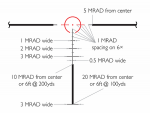Burris has two variable power XTR II scopes that are very close, 1-8 and a 1.5-8 and I am curios to see what your opinions of one vs the other are. I have not seen an XTRII in person but they get decent reviews.
through the LE/MIL program i could get the 1-8 for price A. I can get the 1.5-8 for price B (lower) or I can get the 1.5-8 with a PEPR mount, Fastfire III mounted on the scope for price A. would there be any reason to not get the 1.5-8, with a fee mount and fastfire? I want to use it for multigun and general range usage. I am not going to be a professional 3 gun/multigun shooter, around 6-9 local matches per year. I want to be a better shooter in all disciplines so that is the goal. I understand it is not a true 1x scope, but is is close enough that it can be used in a similar manner
through the LE/MIL program i could get the 1-8 for price A. I can get the 1.5-8 for price B (lower) or I can get the 1.5-8 with a PEPR mount, Fastfire III mounted on the scope for price A. would there be any reason to not get the 1.5-8, with a fee mount and fastfire? I want to use it for multigun and general range usage. I am not going to be a professional 3 gun/multigun shooter, around 6-9 local matches per year. I want to be a better shooter in all disciplines so that is the goal. I understand it is not a true 1x scope, but is is close enough that it can be used in a similar manner




